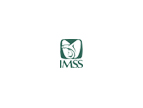
To determine whether prenatal sex hormones from maternal saliva are associated with birth-weight-for-gestational age.We measured salivary progesterone, testosterone, estradiol, dehydroepiandrosterone (DHEA), and cortisone in 504 pregnant women in a Mexico City cohort. We performed linear and modified Poisson regression to examine associations of log-transformed hormones with birth-weight-for-gestational age z-scores and the risk of small-for-gestational age (SGA) and large-for-gestational age (LGA) adjusting for maternal age, sex, BMI, parity, smoking, education, and socioeconomic status.In total, 15% of infants were SGA and 2% were LGA. Each interquartile range increment in testosterone/estradiol ratio was associated with a 0.12 decrement in birth-weight-for-gestational age z-score (95% CI: -0.27 to -0.02) and a 50% higher risk of SGA versus appropriate-for-gestational age (AGA) (95% CI: 1.13-1.99).Higher salivary testosterone/estradiol ratios may affect fetal growth, and identifying the predictors of hormone levels may be important to optimizing fetal growth.








